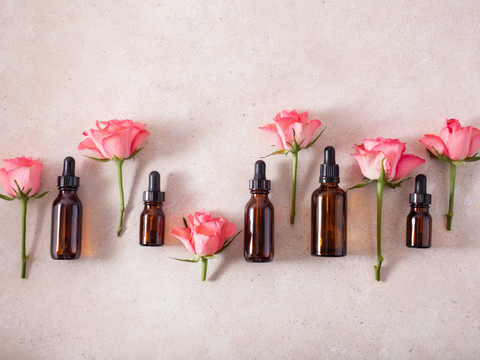Decades ago, there were only cleansers and moisturizers when it came to skincare basics. As time went on, toners came into the scene followed by sunscreens, serums, essences, ampoules, etc. Eventually, our demand for instant beautiful skin was taken as an earning tool for the cosmetic industry. The categories in skincare products kept growing and are still doing so. With the many skincare products that already exist, the names of new products are becoming more interesting, complicated, and even confusing.
In this blog, we discuss all about serums and how you can find out if a serum is really worthy. Read on as we uncover what serums actually do to your skin and what to look out for if you are considering on getting one.

Essentially, there is no standard in cosmetic science, or regulation, to differentiate serums, essences, ampoules, etc. In fact, cosmetic companies can label a product with any name they think can attract (or mislead) the consumers to buy their products.
Are Expensive Serums with Luxurious Texture Better?

The common belief is that if something is sold expensively, we subconsciously assume that it must be, or better be, real good. The same goes for serums as well. When we feel that a serum is a little more concentrated and luxurious in texture compared to toner, we expect that it contains great nutrients for the skin.
But nope, judging based on the texture is not accurate at all. In truth, what makes a serum feel rich and concentrated is just a little bit of inexpensive thickener (think Xanthan Gum, Carrageenan etc). And to make a serum feel extra moisturizing, a little bit of cheap synthetic emollient can do too. Except for hydration, texture has little to nothing to do with the functionality of a product.
Good, skin-friendly ingredients are not limited to serums only. If you have your skincare products with you right now, you can check and see that the active and beneficial ingredients in your less costly and larger size toner and moisturizer, also present in your more expensive and smaller size serum.
Therefore, the price tag and texture of a serum does nothing in telling whether it is of top or poor quality. What matters most in a serum is the concentration of active ingredients in it. However, consumers and even skincare experts have no way to determine this simply based on the list of ingredients.

Even if it is explicitly labelled as 99% pure Aloe Vera Gel, it does not refer to what you might be thinking – 99% of good Aloe Vera + 1% of water. This is only a gimmick to attract business. The truth is, each ingredient has its own purity - 99% pure Niacinamide, 99.3% pure L-ascorbic Acid, 20% Green Tea Extract dissolved in glycerine and water etc.
But on the ingredient list, you can only see “Niacinamide”, “Green Tea Extract”, “Aloe Barbadensis Juice” and so on. Only cosmetic chemists know the exact concentration or purity of the ingredient that is listed.
Hence, a product can be formulated with 80% Water, but contains only 3% Aloe Vera Extract with 99% purity/ pre-dissolved in another solution. The other 17% could be ingredients like thickeners, fragrance, solvents, and preservatives. And yet, the brand still markets it as “99% Aloe Vera” to attract sales even though the “99%” refers to the purity of the ingredient or concentration in a pre-dissolved solution, before it is further diluted in a product.
Are serums worthy for your skin then?

For the same “serum” label, kind-hearted cosmetic companies will include an effective concentration of skin-pleasing ingredients in it.
That being said, there are other brands out there that are profit-minded. These brands take the advantage of consumers who know nothing about ingredients, so they cheat by including lower and ineffective concentration of ingredients in their product, and sell it expensively as a “serum”.
Don’t be surprised when we tell you many expensive “serums” in the market are just “toners” in smaller sizes.
Thus, a serum is worthy for you, only if it is well-formulated.
How to know if a serum is well-formulated?

What does “well-formulated” mean when it comes to serum? Every product has its capacity. Think of it like the memory of your cell phone. Each photo, song, video and message you save in your phone takes up the capacity of a phone. Similarly, the ingredients that are blended into a formulation uses up the maximum capacity allowed for a skincare product. When the chemical space or capacity has reached its limit, the remaining ingredients go to waste and are useless.
Usually, the experienced cosmetic chemists from of cosmetic brands will take the “product capacity” into consideration when formulating a top quality brilliant serum. They will maximize the types of skin-loving ingredients (antioxidants, cell-communicating ingredients, anti-irritants) in clinically-proven effective concentrations for a serum to target specific concerns. The unnecessary ingredients on the other hand such as emollients and thickeners for moisturizing purpose would be minimized in the serum for two main reasons; 1) limited product capacity, 2) you can get these hydrating ingredients in your often cheaper moisturizer.
It is important to note that only serums enriched with an effective concentration of wonderful active ingredients are worthy of your applying time and purchasing money.
Active ingredients in cosmetics are known to be unstable and break down upon exposure to light and air. This is why you often see serums packaged in a small size, so you get to finish them when the main active ingredients are at their optimal state of effectiveness to perform beautifully on your skin.
As mentioned before, skincare experts are only able to tell which ingredients are good or bad from reading the ingredient list and can’t tell the concentration of the ingredients in the product. We can only make a speculation on the concentration according to their order in the ingredient list and our knowledge in the cosmetic formulation. If you are not familiar with ingredients, you can always refer to authentic reviews from beauty forums, articles written by skincare experts or dermatologists, and knowledgeable influencers when you are about to buy a serum.
Alternatively, you have a higher chance of getting well-formulated serums from professional, trustworthy and reputable cosmetic brands (Clinique, Paula’s Choice, SK-II, Estee Lauder, Minimalist, Geek & Gorgeous, The Ordinary etc.). Such brands have more resources to invest on state-of-the-art technology in formulating top quality serums with effective concentrations of good ingredients.
Serums Qualified to be Serums
Brightening
Timeless 20% Vitamin CEF Serum is a light fluid that absorbs quickly and is suitable for all skin types. Besides its ability to lighten post-acne marks and dark spots, it also minimizes wrinkles.


Geek & Gorgeous Porefectly Clear 2% BHA Exfoliating Serum has a light quick absorbing gel liquid texture made for combination to oily skin. It focuses on pore-related problems like enlarged pores and blackheads.

Bffect Totara Acid-Free Anti-Acne Essence has a lightweight and non-sticky texture and is formulated for sensitive skin. It controls acne and sebum to create blemish-free skin.

Minimalist Ceramides 0.3% + Madecassoside is a moisturizing cream that is formulated for anyone with normal to dry skin. While hydrating the skin, it also repairs the skin barrier to give an overall healthy skin.

Your Sharing: Do you like including a serum in your skincare routine? Which serum are you currently using? Why do you like it, or don’t?


